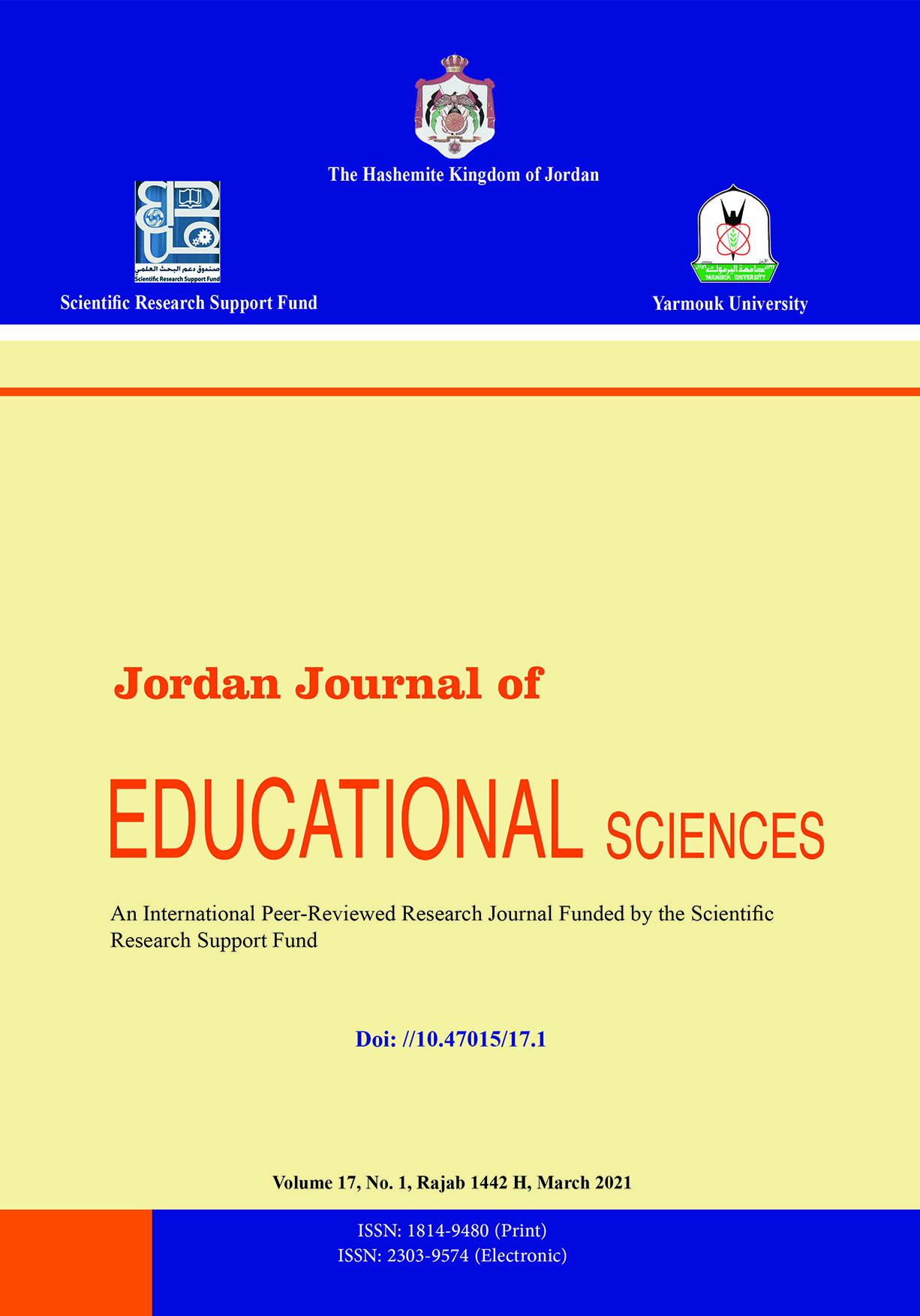Emotional Abuse to Early Elementary School Students as Perceived by Class Teachers, Principals, and School Counselors: A Comparative Study
Keywords:
Abuse, Emotional abuse, Child , School, CounselingAbstract
The main objective of this study was to investigate class
teachers’, school counselors’ and school principals’ perception of
child emotional abuse embedded in the activities of class teachers.
The perception of the three groups was compared internally on one
hand, and externally with a reference group on the other. To achieve
this purpose, 40 schools out of 55 in the First and Second Irbid
Directorates which have the first three classes and a counselor were
semi-randomly selected. Three class teachers were selected from
each school and a sample of 20 yarmouk university faculty members
were selected to form the reference group. Child emotional abuse
scale was constructed based on literature review and child abuse
scales in general which include varieties of items or subscales of
emotional child abuse. The procedures of construction support the
validity and reliability of the scale which has in its final form 53
items, each of 5 ratings (extreme abuse, significant abuse, low abuse
,slight abuse, and no abuse) covering many aspects like degrading
,terrorizing disciplining, ignoring, rejection, isolation, denying
emotional responsiveness ,corruption dissocializing, exploiting ,and
over-expectation. The literature of this study and the procedures of
this scale construction revealed that developing or constructing a
unique emotional child abuse is an important step in the field of
research in this track. The scale was administered to the sample
which eventually contained 108 class teachers, 34 counselors, and
36 principals. The data of ratings were statistically and logically
manipulated, then many conclusions were drawn and
recommendations were advanced. The means of ratings of the four
groups show that all the scale items were charged by some specific
level of emotional abuse. The reference group was highlighted by ten
items of extreme emotional abuse with the highest average within 3.0
to 3.4 subintervals, while the means of the other three groups were
within lower subinterval from 2.5 to 2.5. The variance of ratings was
statistically different: the variance of the reference group shows that
ratings were highly homogenous compared to the counterpart
variance of the other three groups. From another point of view, the
real ratings means were statistically compared with the hypothesized
scale mean. The results revealed that the seeds of emotional child
abuse exist in thinking and perception through verbal and non-verbal
acts of class teachers. These seeds may grow if this kind and level of
perception is negatively supported by similar perception of
counselors or/and principals .Many items were rated by class
teachers revealing that it is considered as normal behavior which is
the opposite of the perception of the other groups from a relative
points of view. But the results in general reveal that the roles of
school counselor and school principals compared with the local
reference group should be more sensitive to the side effects of child
emotional abuse.

